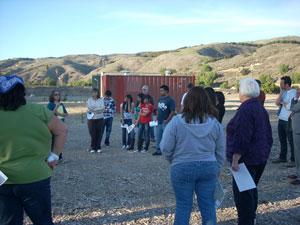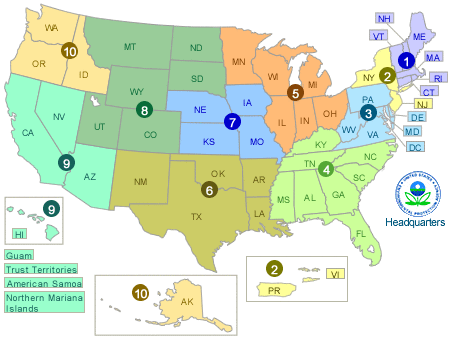Technical Assistance Needs Assessments (TANAs)
Overview
The Technical Assistance Needs Assessment (TANA) is a site-specific process that identifies whether a community requires additional support from EPA to understand technical information and to enable meaningful community involvement in the Superfund decision-making process. Through discussions with community members, EPA identifies how the community is receiving site-related information; what types of information is being received; whether the community needs additional assistance; what types of assistance would benefit the community; and whether there are local organizations interested or involved in site-related issues and capable of acting as an appropriate conduit for technical assistance services. The TANA process produces a blueprint for a coordinated effort to meet a community’s needs for additional technical assistance while minimizing the overlap of services provided by EPA site staff, external partners, and EPA grants and contracts.
- TANA Fact Sheet (PDF)(8 pp, 404 KB, About PDF)
TANAs in Communities
On this page:
- TANA Site List
- TANA Example: Lincoln Park
- TANA Example: Colorado Smelter
- TANA Example: Fillmore, California
TANA Site List
TANAs have been conducted at the following sites:
Updated quarterly (last update: March 2019)
- Aerojet General Corp. (Rancho Cordova, California)
- Albany, Georgia Tools for Change CARE project (Albany, Georgia)
- AMCO Chemical site (Oakland, California)
- American Cyanamid site (Bridgewater Township, New Jersey)
- Ashland/Northern States Power Lakefront Superfund site (Ashland, Wisconsin)
- Bandera Road Groundwater Plume site (Leon Valley, Texas)
- Black Butte Mine site (Cottage Grove, Oregon)
- BoRit Asbestos Tailings Pile site (Ambler, Pennsylvania)
- Brown & Bryant, Inc. (Arvin Plant) (Arvin, California)
- Bunker Hill Mining and Metallurgical site (Coeur d’Alene, Idaho)
- Chevron Questa Mine (Questa, New Mexico)
- Colorado Smelter (Pueblo, Colorado)
- Cove Transfer Stations (Navajo Nation)
- Environmental Justice Jacksonville Showcase Community project (Jacksonville, Florida)
- Former Romic Environmental Technologies site (East Palo Alto, California)
- Formosa Mine site (Douglas County, Oregon)
- Fort Ord site (Monterey, California)
- Homestake Mining site (Grants, New Mexico)
- Hoosick Falls (Saint-Gobain Performance Plastics Site) (Hoosick Falls, New York)
- Hunters Point Naval Shipyard/Yosemite Slough (San Francisco, California)
- Kettleman Hills Waste Management Facility (Kettleman City, California)
- Koppers Tie Plant Facility (Tie Plant, Mississippi)
- Lincoln Park site (Cañon City, Colorado)
- Midnite Mine site (Wellpinit, WA)
- Motorola 52nd Street site (Phoenix, Arizona)
- Northeast Church Rock/Quivira mine sites (Navajo Nation)
- Pacific Coast Pipeline site (Fillmore, California)
- Phoenix Goodyear Airport Area site (Goodyear, Arizona)
- Rockets, Fireworks and Flares site (Rialto, California)
- San Gabriel Valley (Area 1) (Los Angeles County, California)
- San Gabriel Valley (Area 2) (Baldwin Park, California)
- San Gabriel Valley (Area 3) (Alhambra, California)
- San Gabriel Valley (Area 4) (La Puente, California)
- Selma Pressure Treating Company site (Selma, California)
- Shell Bluff/Burke County area (Burke County, Georgia)
- Smith and Mariano Lakes (Navajo Nation)
- Solutia W.R. Krummrich Plant (East St. Louis, Cahokia and Sauget, Illinois)
- South Atlanta for the Environment (SAFE) CARE project (Atlanta, Georgia)
- Stringfellow site (Jurupa Valley, California)
- ROMIC Environmental Technologies site (East Palo Alto, California)
- Tucson International Airport Area site (Tucson, Arizona)
- United Heckathorn site (Richmond, California)
- Upper Columbia River site (Kettle Falls, Washington)
- Walter Coke, Inc. Facility (North Birmingham, Alabama)
TANA Example: Lincoln Park
The Lincoln Park Superfund site in Cañon City, Colorado, has a long history of community members interested in cleanup of its 2,600-acre uranium mill and mill-associated contamination. While updating their Community Involvement Plan in 2015, EPA and the Colorado Department of Public Health and Environment asked specialists from the Technical Assistance Services for Communities (TASC) program to simultaneously conduct a TANA to assess technical assistance needs of this active community. Combining Community Involvement Plan interviews with TANA conversations significantly reduced the burden on community members and provided an efficient way to gather valuable input. The assessment identified strong community interest in better understanding several topics, including the Superfund process, past and future risks of surface and groundwater contamination, past and current levels of soil/air contamination, long-term community health outcomes in neighboring communities, and real estate disclosure law for current and future residents. To meet community needs, a TASC technical advisor has been working with the Lincoln Park Community Advisory Group (CAG) to review documents and provide technical comments to help the community better understand site activities. The technical advisor will be attending CAG meetings to present on these document reviews and answer community questions.
TANA Example: Colorado Smelter
Responding to the proposed listing of the Colorado Smelter Superfund Site on the National Priorities List, community members in Pueblo, Colorado, quickly organized to form a Community Advisory Group (CAG) in September 2014. After conducting its Community Involvement Plan (CIP) for the site soon after, EPA asked specialists from the Technical Assistance Services for Communities (TASC) program to conduct a TANA for the community. Using the information EPA collected for the CIP, TASC pulled out and synthesized the community’s stated technical assistance needs and then confirmed them with the CAG. TASC specialists then provided recommendations on how to meet the community’s needs. The assessment identified strong community interest in outreach materials for children and families to avoid exposure to site-related contaminants, technical advisor assistance to review and explain site technical documents and activities, and informational workshops, fact sheets and written materials about topics of community concern. To address community needs, TASC has developed English and Spanish doorknockers filled with images to provide information about ways to limit exposure to lead and arsenic in the soil. A TASC technical advisor is also reviewing technical documents and attending CAG meetings to present information and answer community questions.
TANA Example: Fillmore, California

In early 2011, when youth group One Step A La Vez learned about the status of the Pacific Coast Pipeline Superfund site in Fillmore, California, they contacted EPA Region 9 to request technical assistance services for the community. EPA had issued a draft cleanup plan for the former oil refinery for public review and was working with Chevron, the site’s potentially responsible party, to increase community engagement activities. EPA’s Technical Assistance Services for Communities (TASC) program conducted a TANA, which included a site tour as well as meetings and interviews with community members. The assessment identified strong community interest in several areas, including historical health studies, soil removal history, soil gas vapor intrusion, and groundwater and air monitoring data. To meet community needs, a TASC technical advisor hosted a two-part community discussion to present information on these topics of interest and answer questions.
- TASC TANA: Pacific Coast Pipeline (PDF)(7 pp, 92 K, About PDF)
Contact Us
If your community is interested in a TANA, please locate your state and EPA Region on the map below and contact the appropriate EPA Regional TASC Coordinator.

EPA Regional TASC Coordinators
Sarah White
EPA Region 1
(ME, NH, VT, MA, RI, CT)
(617) 918-1026
white.sarah@epa.gov
Gina Soscia
EPA Region 3
(PA, DE, DC, MD, VA, WV)
(215) 814-5538
soscia.gina@epa.gov
Susan Pastor
EPA Region 5
(IL, IN, MI, MN, OH, WI)
(312) 353-1325
pastor.susan@epa.gov
Pamela Houston
EPA Region 7
(NE, KS, IA, MO)
(913) 551-7699
houston.pamela@epa.gov
Viola Cooper
EPA Region 9
(CA, NV, AZ, HI, and Pacific Territories)
(415) 972-3243
cooper.viola@epa.gov
Shereen Kandil
EPA Region 2
(NY, NJ, PR, VI)
(212) 637-4333
kandil.shereen@epa.gov
L'Tonya Spencer
EPA Region 4
(KY, TN, NC, SC, MS, AL, GA, FL)
(404) 562-8463
spencer.latonya@epa.gov
Jason McKinney
EPA Region 6
(NM, TX, OK, AR, LA)
(214) 665-8132
mckinney.jason@epa.gov
Sisay Ashenafi
EPA Region 8
(MT, ND, WY, SD, UT, CO)
(303) 312-6138
ashenafi.sisay@epa.gov
Debra Sherbina
EPA Region 10
(WA, OR, ID, AK)
(206) 553-0247
sherbina.debra@epa.gov
